- Connect with us
- My Cart $0.00
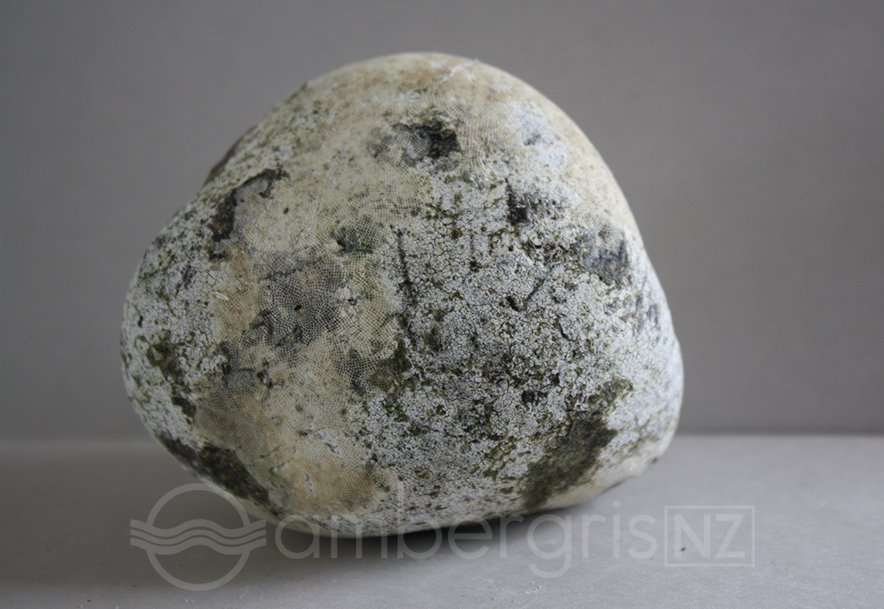

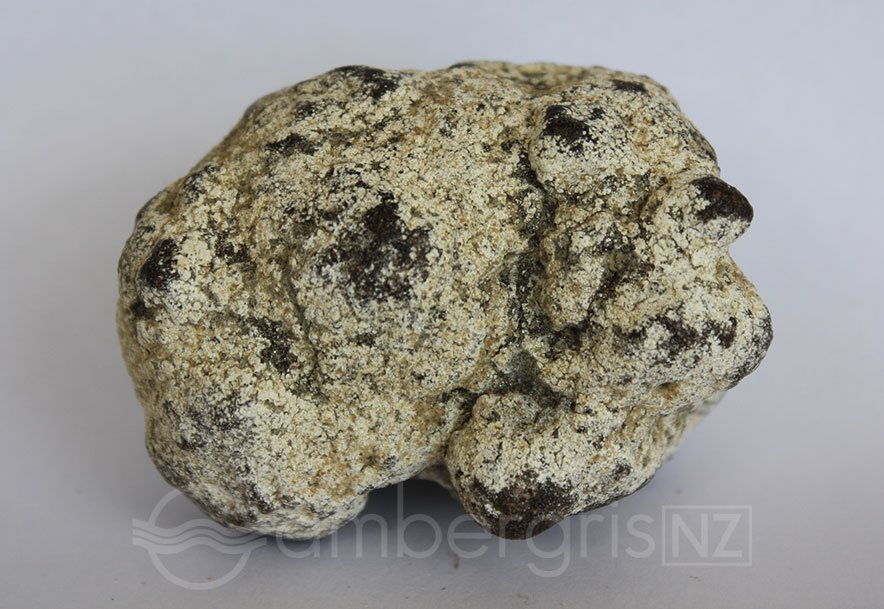

Ambergris comes in many colours, shapes and textures. This makes identification difficult and ensures frustration for beachcombers on the hunt for this elusive substance. Ambergris is most often white, grey, black or brown in colour or even a mixture of these shades. The colours are typically dull and earthy and the texture is often hard, like rock or dry clay. Check the sections below to find more helpful tips to identify ambergris. Dedicated beachcombers may like to visit our Buy Ambergris page and purchase a small piece which can be used as a reference.
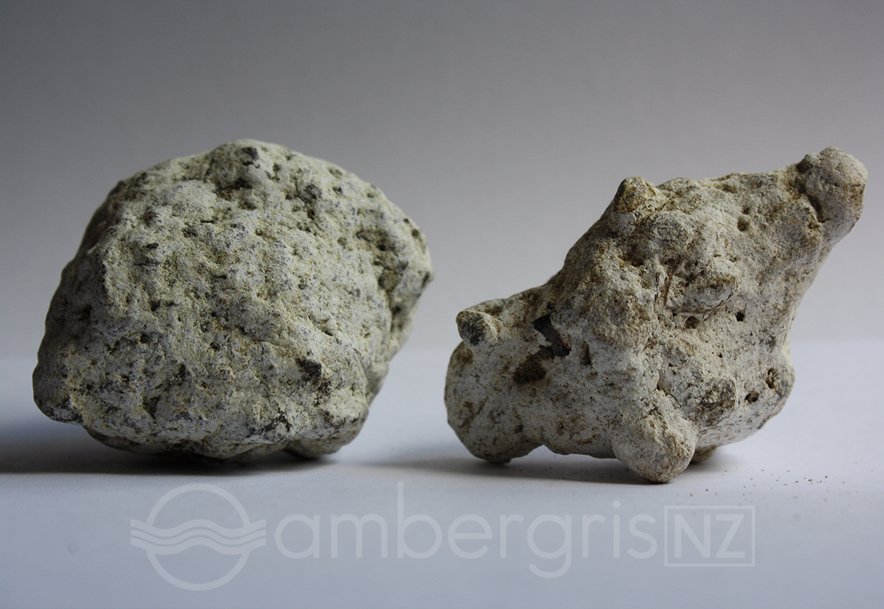
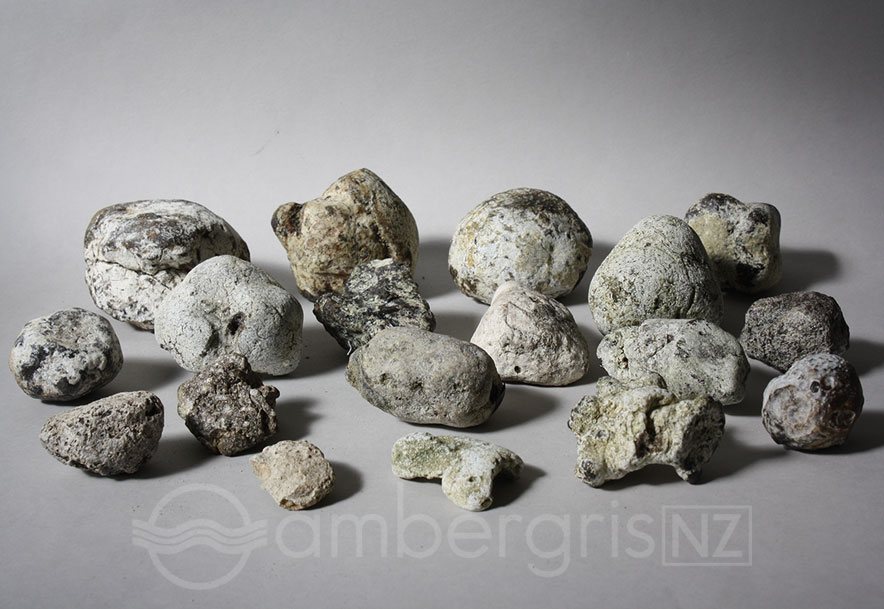
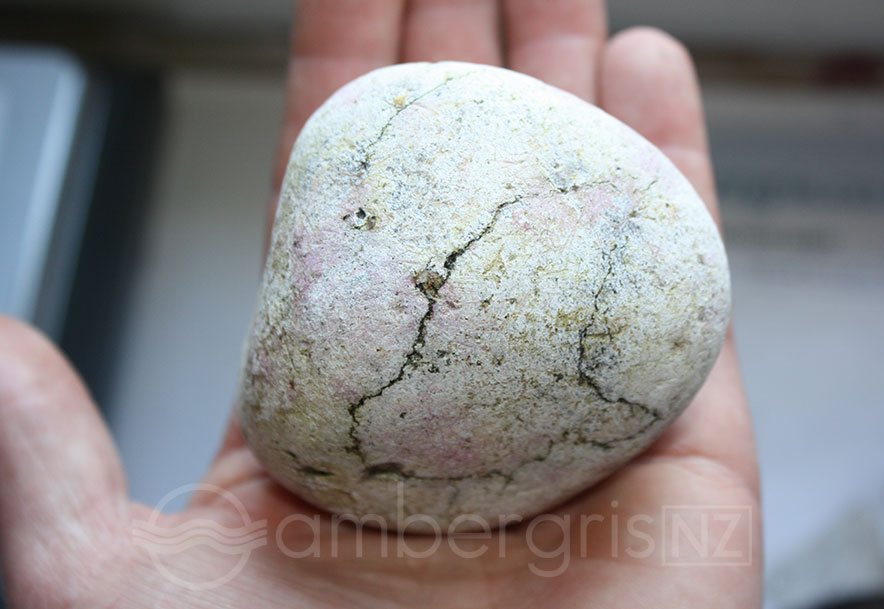
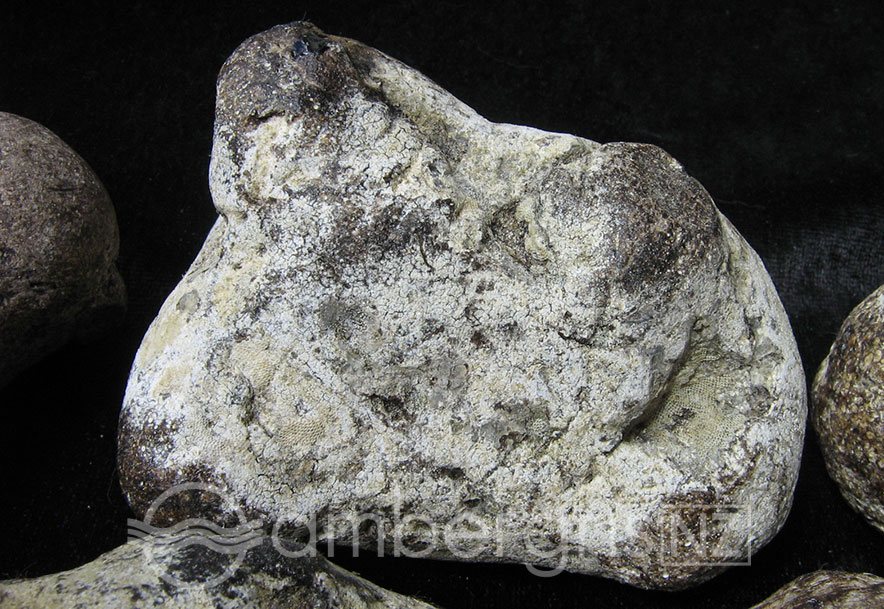
Ambergris cures as it floats in the ocean becoming lighter in colour and in weight as it does so. The action of the water tends to roll the ambergris leveling out the surface to a surprisingly smooth finish in some cases. Rounded and oval shaped pieces are common due to this rolling and smoothing action which can continue for many years. Although oval and rounded shapes tend to predominate; ambergris has a propensity to surprise with even the most unusual shapes and forms increasing the difficulty of identification.
As a general rule; any material collected which has a clearly defined square or rectangular shape is more likely to be a manmade material and subsequently less likely to be ambergris.
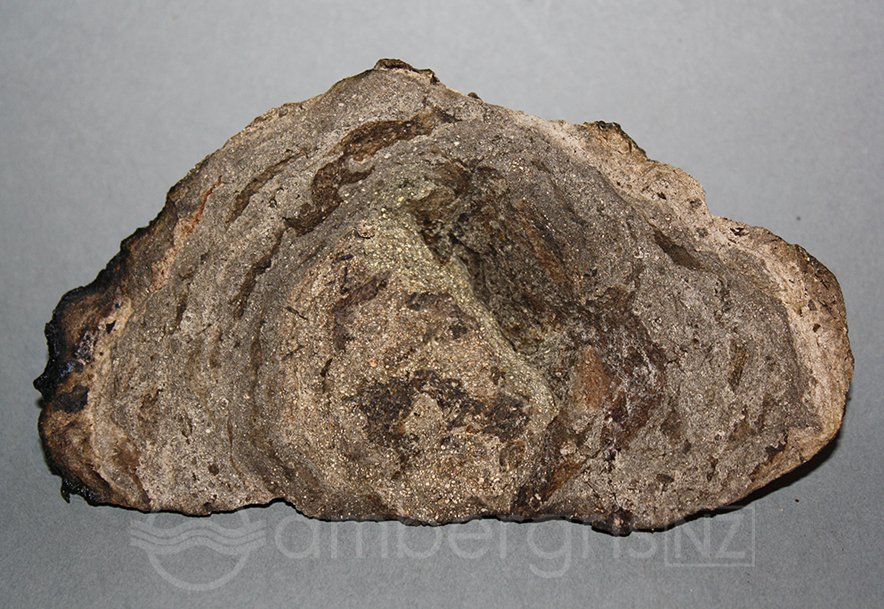
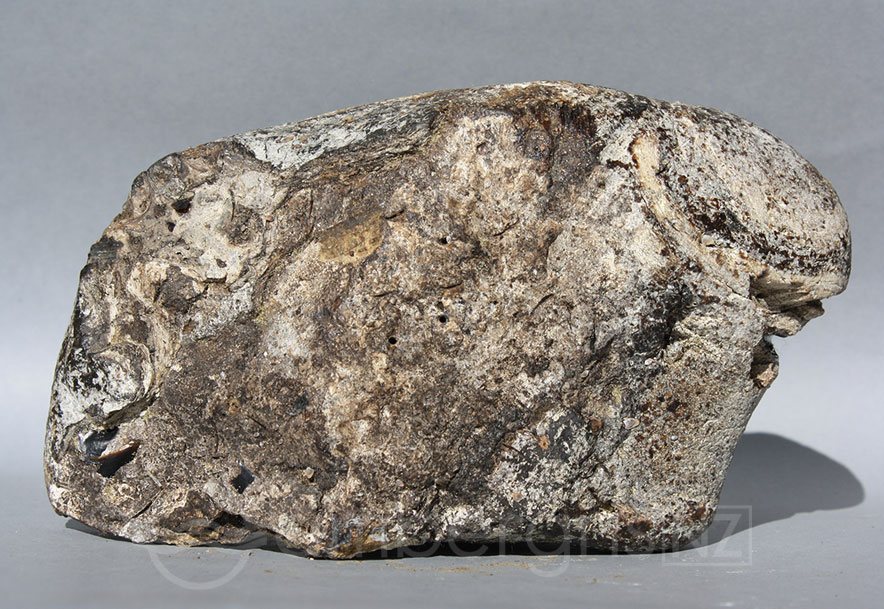
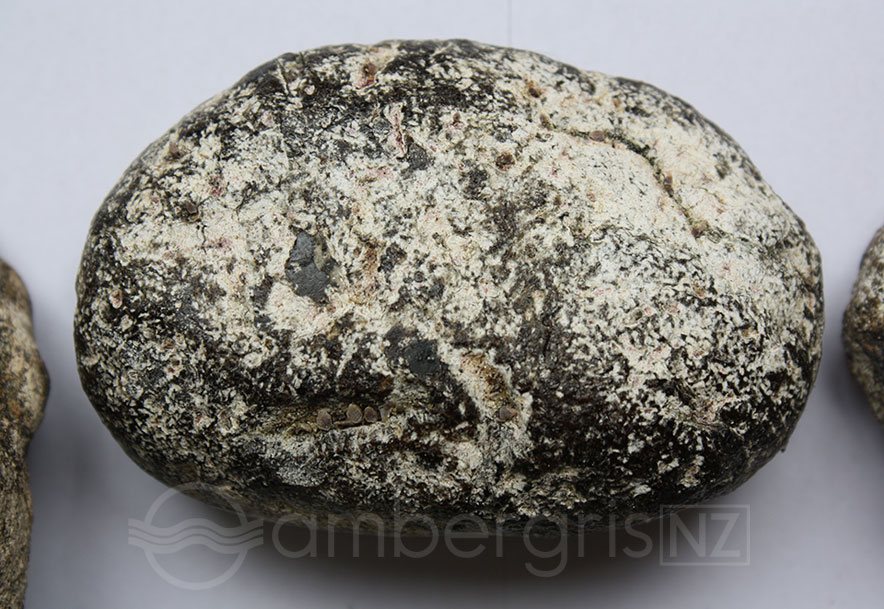
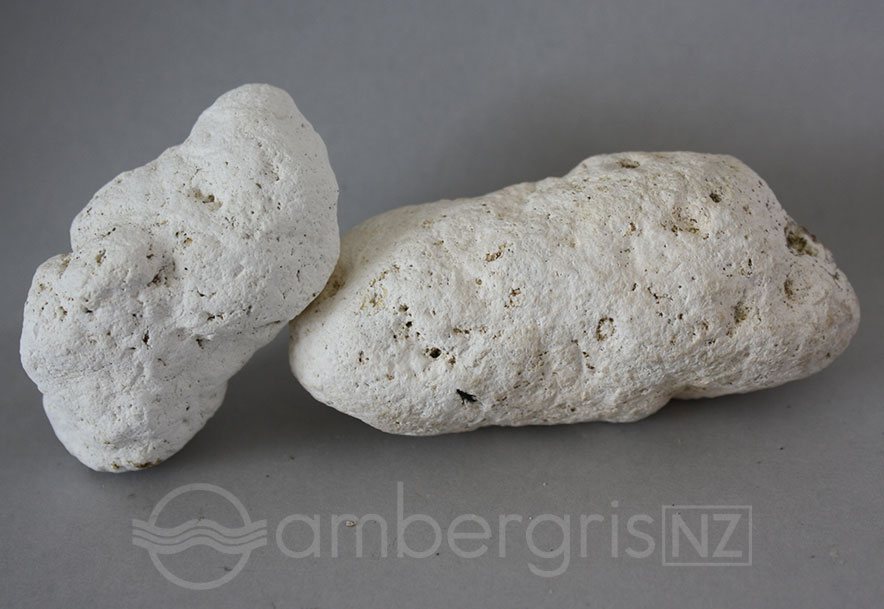
Pieces which have been floating in the ocean for a long time develop a white coating on the outside surface (oxidation) which may be powdery and fragile or even quite thick and hard (like thick wrinkled shell). A typical appearance is of a mixed surface colour with powdery white patches over dark grey, black or brown surface colours beneath
Inside, ambergris is often brown or grey in colour although it can range from jet black, brown to light or dark grey and more rarely off white or cream.
Well cured pieces may be as hard as rock or similar to dry clay with a dense interior texture (like fine compacted sand). Less cured pieces may have a softer exterior surface which will still resist firm pressure and the inside texture may be pasty similar to damp clay.
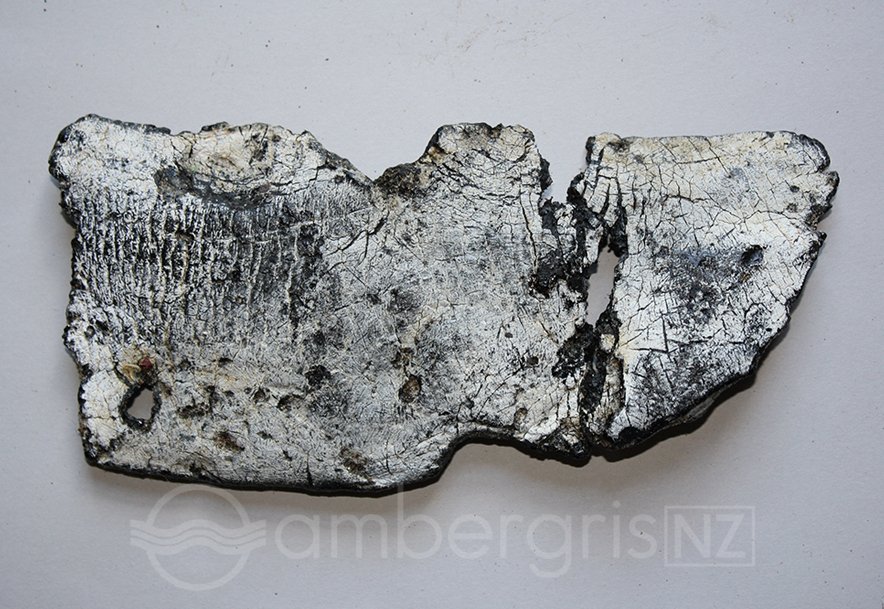
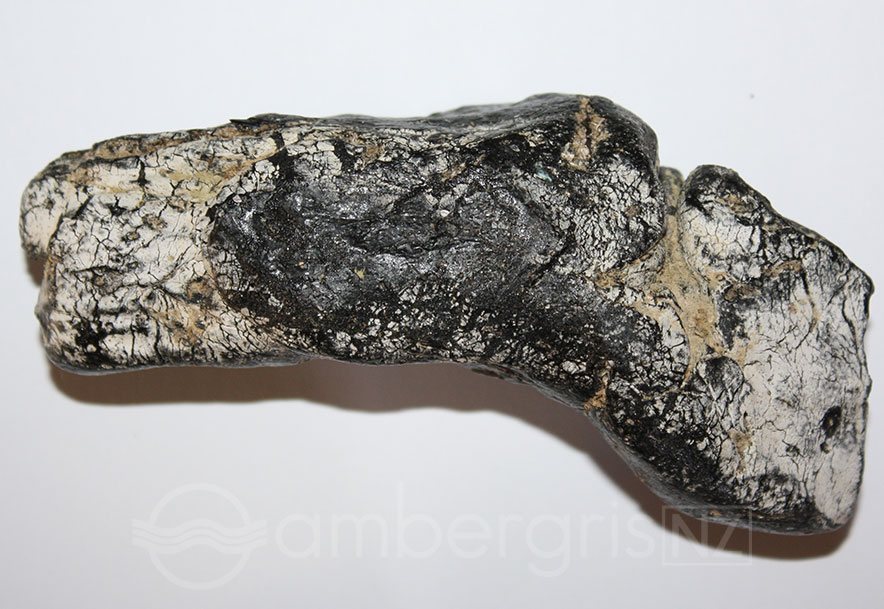
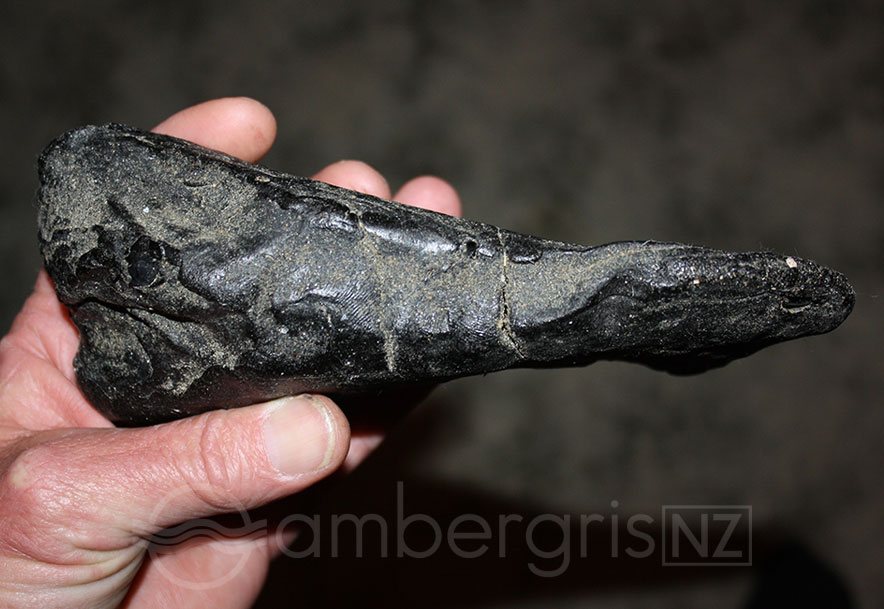

We are often asked about the colour of low quality ambergris. The lowest quality ambergris which is also referred to as soft black or fresh ambergris is a completely different type of product. While it is still collected; the value is much less as this type of ambergris has more limited applications and is less in demand. Soft black or fresh ambergris is normally jet black in colour though it may also develop a thin powdery white coating (oxidation) on the surface. It can be found in flat strips and in larger lumps which may resemble a flattened cow pat in appearance. It has a matching unpleasant odour of scented cow dung. The texture of this material is not hard but rather pliable like softened or melting tar. It can be very sticky and will more easily melt in the heat.
As a rule; if you collect any item which has a soft texture but is not black in colour; it will not be ambergris.
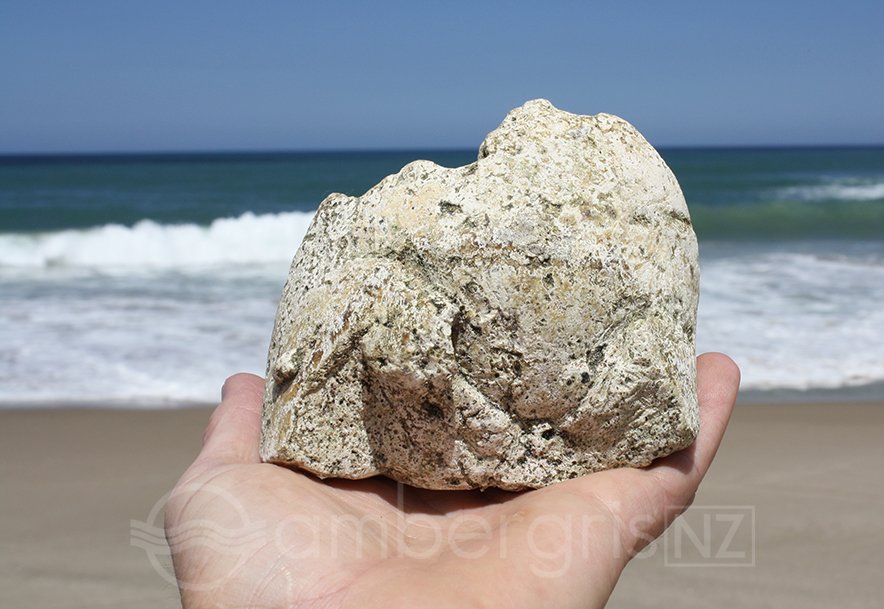
The “feel” of ambergris is often described as waxy/tacky which can be confusing for beachcombers as this characteristic is more obvious when ambergris is held in the hands for some minutes. This waxy quality increases with the warmth of the hands but may not be noticeable when a piece is first collected at the beach due to the effects of any cold salt water and moisture remaining on the surface.
As there are materials which have a much more easily noticeable waxy or greasy texture than ambergris; this waxy description can be initially misleading for beachcombers.
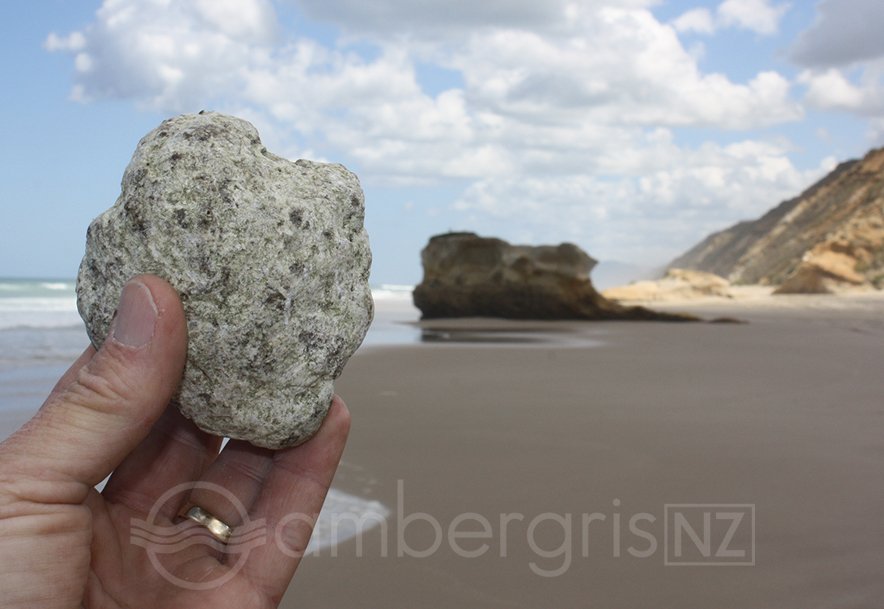
So, what does it smell like? Well, it’s complicated. Ambergris has an odour which is difficult to explain to anyone who has never had the pleasure of its sensual aroma. There is no denying that it is odd with its combination of sweetness and raw animal potency. For those who grow to love its exquisite yet elusive notes; the contradiction is part of this attraction. Ambergris is often described as being musky and having a sweet earthy aroma unlike any other or a mossy fragrance reminiscent of the damp forest floor. Add a dash of ocean spray, a hint of cigar, a good amount of sweetness and a little odour of the stable floor to complete the recipe for this exotic fragrance blend. Ask 10 different people to describe their impression of the ambergris fragrance and you may receive 10 different answers. In the first instance; the fragrance will vary greatly depending on the quality of a particular piece. Then there is the fragrance perception unique to us all where an odour so pleasant to one person is offensive to another. Given that ambergris originates in the bottom of a whale; there is a general (and not unreasonable) expectation that ambergris will have a strong and foul odour. This is not the case. The base animal (manure) odour fades as ambergris cures in the ocean. In general, lighter coloured pieces of ambergris have a subtle, pleasant fragrance. The white and grey varieties, in particular, possess the subtle, sweet addictive aroma which is so highly prized and brings such rich rewards for the dedicated beachcomber.
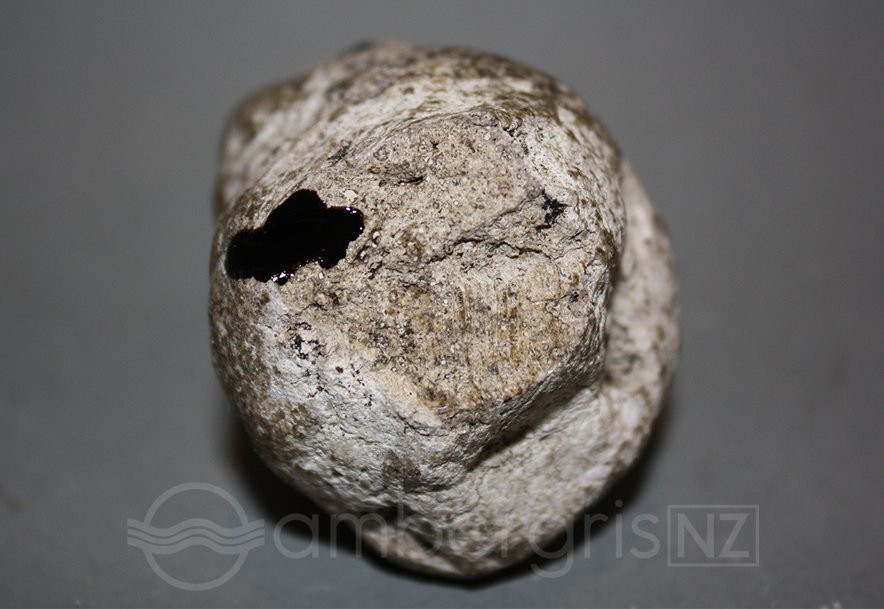
Try this simple “do it yourself” home test to check any unusual items you have found. The test is not sufficiently reliable to provide a positive ID unless you are thoroughly familiar with the required result. However, the test result may be helpful in determining whether it is worth pursuing the enquiry further.
Hot Needle Test
